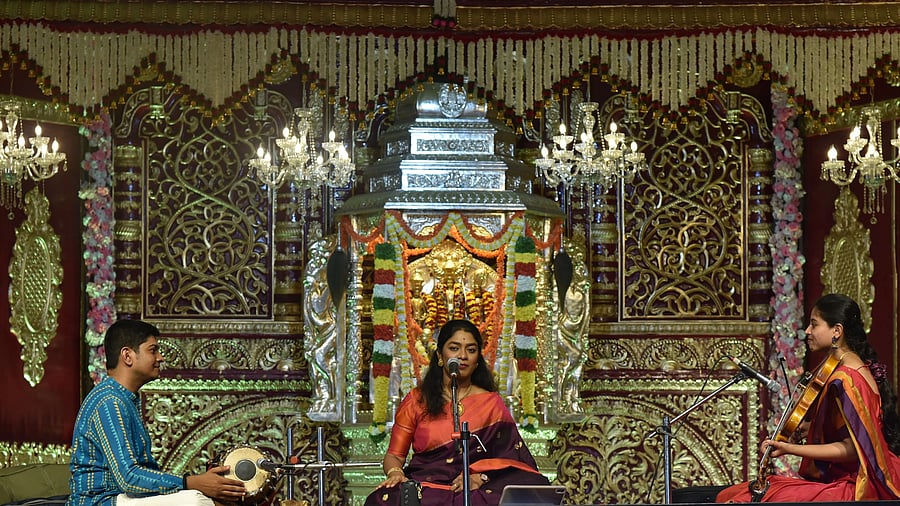
Credit: Special Arrangement
Platforms and opportunities for Karnatik classical musicians have increased in recent years, but making a living only from concerts is still a distant dream, many say.
Well-known singer T M Krishna recently said it was nearly impossible for an artiste to survive on performances alone.
Up-and-coming musicians now have to teach, conduct workshops, network for opportunities, and take up ancillary jobs when they should be devoted to honing their craft and building repertoire, he posted on social media.
Senior vocalist and guru R K Padmanabha, who lives and teaches in J P Nagar, says full-time classical music careers were rare even in the past, and today about 40% of his students have taken the plunge.
For 26-year-old Akshatha Rudrapatna, his student, teaching is essential; she gets two or three concerts a month. Classes at a Bengaluru school and online sessions with students, including some from Australia, make up 70% of her earnings.
Krishna had suggested musicians look abroad for students who can pay more, but Akshatha says Indian students abroad are more serious. “And given the time difference, morning classes leave the rest of the day for my own practice,” she says.
Young vocalists earn Rs 5,000-Rs7,000 for a concert in Bengaluru, she says. But a mridangam artiste with more than 20 years’ experience says he makes only between Rs 2,000 and Rs 5,000. “I work in IT to sustain myself,” he says.
Vocalist M S Deepak, 36, also depends on teaching for 80% of his income. After an initiative by Karnataka Ganakala Parishat, fees have improved, he says. Lead artistes now get Rs 12,000-Rs 15,000 for a concert, while accompanists earn about Rs 8,000 each.
Manasi Prasad, vocalist, agrees that concert fees have not kept pace with inflation. Besides performing, she
teaches at universities and consults in the arts sector. “Today, every artiste must be an entrepreneur and bring all their skills to the table. It is a profession like any other,” she explains.
But teaching brings its own pressures. Padmanabha points out teachers end up accepting all students, irrespective of whether they have the interest or potential. “That can be unsatisfying,” he says.
Deepak adds that four to five hours of teaching daily leaves the voice strained, leaving little energy for the artiste’s own practice. “Performing is like writing an exam. We have to give our best each time. Audiences don’t excuse a tired voice,” he says.
Visibility has become as important as talent. Akshatha says some organisers now prefer artistes with a strong social media presence, sometimes prioritising popularity over merit. This trend, she fears, reduces the space for chaste concerts. Some artistes now produce reels, hire social media teams, and branch out into fusion and playback to stay relevant, she observes.
The pressure is not unique to Karnatik music. Murali Mohan Gowda, a rudra veena player in the dhrupad tradition, says audiences have thinned after the pandemic. “Organisers prefer artistes who are known faces online,” he says. At 42, he now shoots and edits his own performances, though he admits promoting classical music in short-format videos is not always practical. “Cutting a clip of 10-15 seconds of alaap just won’t do justice to it,” he explains.
Padmanabha believes that only sincerity, confidence, and a constant drive to improve can help an artiste survive in the long run and leave a lasting impression on audiences.
Manasi says artistes must be supported because they are a cultural treasure. "Otherwise, they risk being lost to future generations. For arts to survive, artistes must too — which means government, corporates, patrons, and individuals must step in, so artistes can focus on what they do best," she explains.